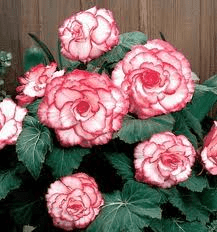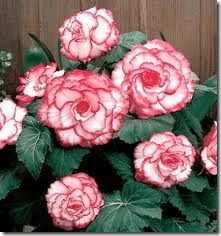Begonias are succulent plants with an array of vibrant colors and flower diversity. The blooms of these fast-growing plants are ruffled, plain or double. Begonias can be grown indoors or outdoors and developed as upright plants or trailing. There are over 1,000 species of begonias in three varieties: fibrous-rooted, rhizomatous and tuberous-rooted. The easy-to-care-for tuberous-rooted begonias that grow from fleshy stems similar to a bulb are the most common among home gardeners.
- Difficulty:
- Easy
Instructions
things you’ll need:
- Peat moss
- General-purpose fertilizer
- Perlite
- Flower pots or flats
- Soaker hose
- Stakes
- Support rims
Planting and Soil
- Add peat moss and compost to the top 8 to 12 inches of soil in your flower bed. This creates suitable draining for your begonias.
- Add general-purpose fertilizer to a flower bed. Follow directions on the package for mixing and application.
- Use a 50-50 mixture of perlite and peat poss in pots or flats if you are starting your begonias indoors from tubers. Do not transplant the shoots outdoors when a winter frost is on the way. Wait until the frost is over.
- Plant the shoots and more mature begonias two to three times as deep as the begonia is tall.
- Plant your begonias in moderate light and shaded areas. Full sunlight damages most types of begonias. If you plant your begonias in containers, they will do well on patios.
- Bring plants indoors before a frost if you want to save them. Even though begonias can grow in a variety of climates, they are considered tropical plants. While they can withstand a mild winter, they will not survive a frost. If possible, bring the plants indoors if a frost is on the way.
- Transplant the begonias in containers with potting soil in a well-ventilated area, and keep them near sunny areas, gradually reducing light so they can adjust to the indoors.
Maintenance
- Use a soaker hose to water your begonias. The low-pressure hose will gently water your plants.
- Monitor the watering so water seeps into the soil to reach several inches below the surface. However, be careful of oversaturating your plants and new plants to prevent rot of tuberous roots.
- Monitor your plants for signs of insects and fungus. Begonias have very little problems with insects and fungus. When they are infected, it is generally powdery mildew, botrytis blight or mealybugs.
- Apply horticultural oil sprays or insecticidal soaps to kill the pests. Snails and slugs that may infest flower beds can be eradicated with bait.
- Use stakes or support rims if your plants need extra support to stay erect. Be careful when staking young plants to avoid damage to tubers, the enlarged parts of the plants underground that store nutrients.
- Groom the plants by getting rid of yellowing or dead vegetation. The flowers of healthy begonias can grow to be over 6 inches in diameter and plants between 12 and 18 inches.
Tips & Warnings
-
Check for firm tubers before purchasing. Do not buy tubers that have soft spots or show signs of rot.
-
If you plant to grow from a plant, look for begonias with green, healthy foliage.


Deprecated: strpos(): Passing null to parameter #1 ($haystack) of type string is deprecated in /home/agriviek8Qv/agriviet.net/public_html/wp-includes/comment-template.php on line 2522